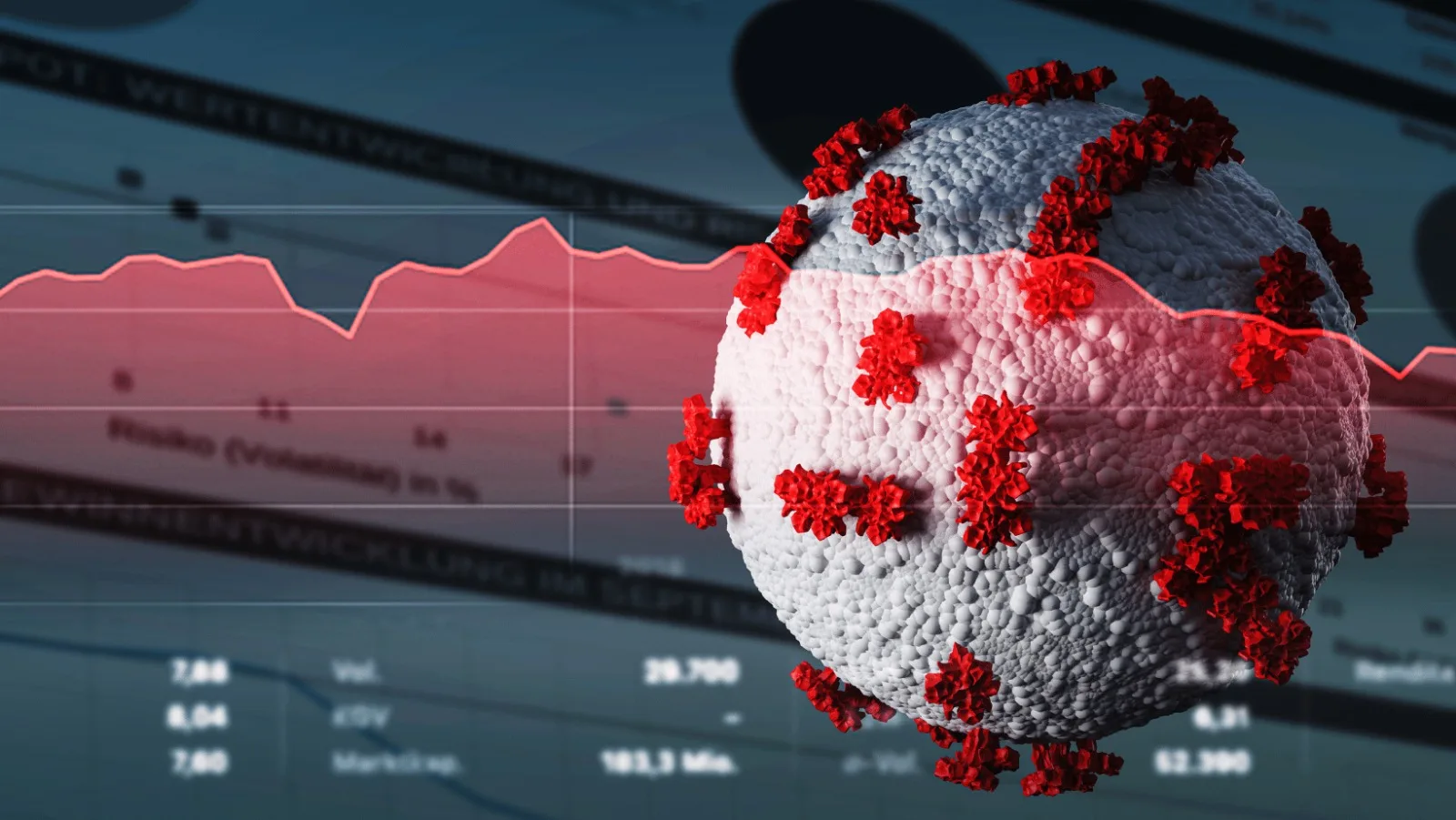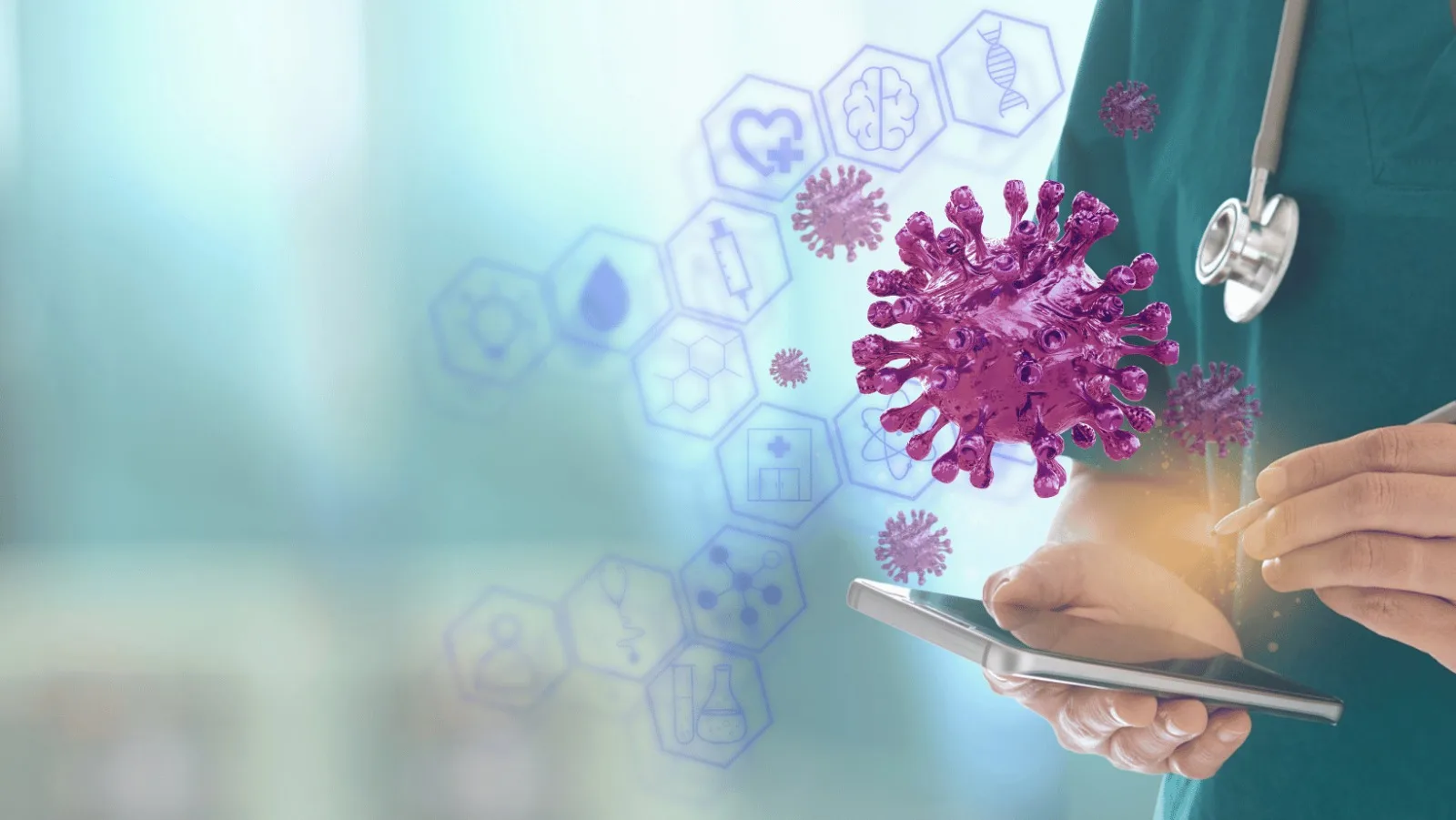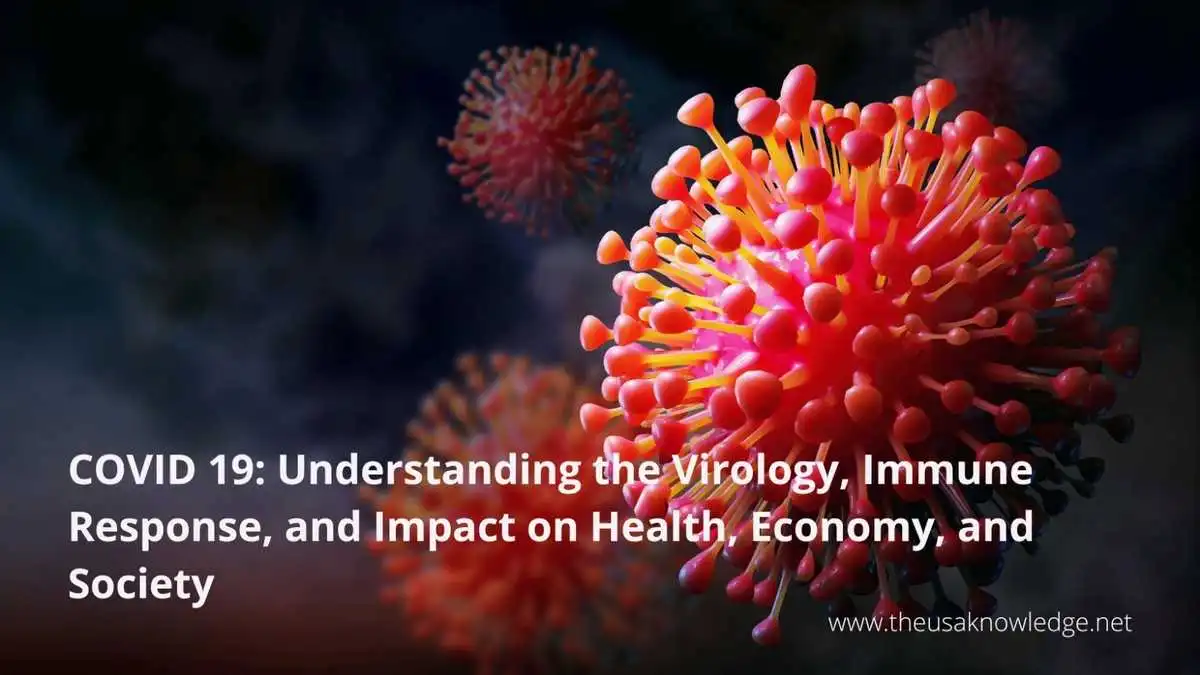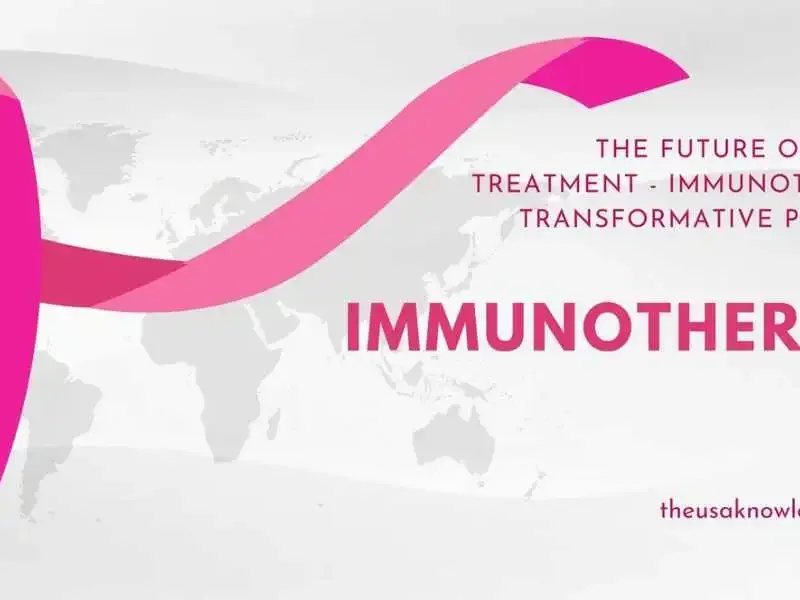COVID 19, also known as the coronavirus disease, is an infectious illness caused by the novel coronavirus SARS-CoV-2. The virus was first identified in December 2019 in Wuhan, China, and has since spread globally, leading to a pandemic. COVID 19 primarily spreads through respiratory droplets when an infected person talks, coughs, or sneezes, and can also be spread by touching contaminated surfaces and then touching one’s face.
The symptoms of COVID 19 can range from mild to severe and can include fever, cough, fatigue, loss of taste or smell, and difficulty breathing. While many people with COVID 19 recover without hospitalization, the disease can be severe or fatal, particularly for older adults and people with underlying medical conditions.
In response to the pandemic, public health measures such as social distancing, mask-wearing, testing, and vaccination have been implemented to control the spread of the virus. The COVID-19 pandemic has had a significant impact on global health, economy, and society, highlighting the importance of preparedness, collaboration, and resilience in the face of emerging infectious diseases.
The Science of COVID-19

The virology of SARS-CoV-2 and its variants
The virology of SARS-CoV-2, the virus responsible for COVID 19, is a critical area of study for understanding the pandemic and developing effective vaccines and treatments. SARS-CoV-2 is a member of the coronavirus family, which also includes the viruses responsible for severe acute respiratory syndrome (SARS) and Middle East respiratory syndrome (MERS).
SARS-CoV-2 is an enveloped, positive-sense single-stranded RNA virus, which means that its genetic material is made up of a single strand of RNA that can be directly translated into proteins by host cells. The virus has a spike protein on its surface that enables it to bind to and enter human cells, particularly those in the respiratory system.
One of the key characteristics of SARS-CoV-2 is its ability to mutate and evolve. Since the beginning of the pandemic, the virus has undergone several mutations and given rise to new variants that have different biological and epidemiological properties. For example, the Alpha variant, which was first identified in the UK, is thought to be more transmissible than the original strain of the virus, while the Beta variant, which was first identified in South Africa, may be more resistant to some vaccines.
Scientists are closely studying the virology of SARS-CoV-2 and its variants to better understand how the virus spreads, how it interacts with human cells, and how it can be targeted with vaccines and treatments. By understanding the molecular mechanisms of the virus and its variants, researchers can develop more effective diagnostic tests, vaccines, and therapeutics that can help to control the spread of the pandemic.
However, the ongoing evolution of the virus also poses a significant challenge for public health efforts. The emergence of new variants that are more transmissible, more virulent, or more resistant to existing vaccines and treatments can complicate efforts to control the pandemic and may require new strategies for prevention and treatment.
The virology of SARS-CoV-2 and its variants is a complex and rapidly evolving field of study that is critical for understanding the COVID-19 pandemic and developing effective strategies for prevention and treatment.
The immune response to SARS-CoV-2
Understanding the immune response to SARS-CoV-2, the virus responsible for COVID 19, is crucial for developing effective vaccines and treatments, as well as for predicting the course of the pandemic. Like other viral infections, the immune system plays a critical role in controlling the spread of the virus and preventing severe disease.
The immune response to SARS-CoV-2 involves both innate and adaptive immune responses. The innate immune response is the first line of defense against the virus and involves the activation of various immune cells and signaling pathways. The adaptive immune response is a more specific response that is tailored to the virus and involves the production of antibodies and the activation of T cells, which can recognize and eliminate infected cells.
The development of a robust adaptive immune response to SARS-CoV-2 is critical for controlling the spread of the virus and preventing severe disease. Research has shown that individuals who produce high levels of neutralizing antibodies, which can block the virus from infecting cells, are more likely to recover from COVID 19 and less likely to experience severe symptoms.
However, the immune response to SARS-CoV-2 is complex, and there is still much that researchers do not understand. For example, it is not yet clear why some individuals produce a more robust immune response than others or why some individuals develop long-term immunity to the virus while others do not. Additionally, the emergence of new variants of the virus raises questions about the ability of the immune system to respond to these new threats.
Despite these uncertainties, the development of effective vaccines against SARS-CoV-2 has been a major achievement in the fight against COVID 19. Vaccines work by stimulating the adaptive immune response to produce neutralizing antibodies and T cells that can recognize and eliminate the virus. The success of vaccines in reducing the incidence of COVID 19 and preventing severe disease underscores the critical role of the immune response in controlling the pandemic.
Understanding the immune response to SARS-CoV-2 is critical for developing effective strategies for prevention and treatment of COVID 19. While much remains unknown about the immune response to the virus, ongoing research is helping to shed light on the mechanisms of immunity and identify new approaches for controlling the pandemic.
The pathogenesis of COVID-19
The pathogenesis of COVID 19, the disease caused by SARS-CoV-2, is a complex process that involves the interaction between the virus and the human body. COVID 19 can range from asymptomatic infection to severe respiratory illness and death, and the severity of the disease is influenced by various factors, including age, underlying health conditions, and immune status.
The initial stage of COVID 19 pathogenesis involves the entry of the virus into the respiratory system. The virus enters human cells by binding to the ACE2 receptor on the surface of host cells, particularly those in the lungs. Once inside the cell, the virus hijacks the cellular machinery to replicate and produce more virus particles.
As the virus replicates, it triggers an immune response, leading to the release of inflammatory molecules such as cytokines and chemokines. This immune response is designed to eliminate the virus, but in some cases, it can lead to an excessive and harmful immune response, known as a cytokine storm. The cytokine storm can cause damage to the lungs and other organs, leading to severe respiratory distress, organ failure, and death.
In addition to the respiratory system, SARS-CoV-2 can also infect other organs such as the heart, liver, and kidneys, leading to a range of clinical symptoms and complications. The mechanisms by which the virus causes damage to these organs are not fully understood but are thought to involve both direct viral injury and immune-mediated damage.
The pathogenesis of COVID 19 is a rapidly evolving field, and ongoing research is shedding light on the mechanisms underlying the disease. This understanding is critical for the development of effective treatments and vaccines to combat the pandemic. Several treatments have been developed that target various stages of the pathogenesis of COVID 19, including antiviral drugs that target the virus’s replication and immunomodulatory drugs that aim to modulate the immune response.
The pathogenesis of COVID 19 is a complex process that involves the interaction between the virus and the human body. The severity of the disease is influenced by various factors, and the mechanisms by which the virus causes damage to the body are not fully understood. Ongoing research is critical for improving our understanding of the disease and developing effective strategies for prevention and treatment.
The role of asymptomatic transmission in the spread of COVID-19
Asymptomatic transmission of SARS-CoV-2, the virus that causes COVID 19, has played a significant role in the rapid spread of the pandemic. Asymptomatic individuals are those who are infected with the virus but do not display any symptoms of the disease. They can still transmit the virus to others, making it difficult to control the spread of the virus.
Studies have shown that asymptomatic transmission can occur in a significant proportion of COVID-19 cases. According to the World Health Organization (WHO), up to 40% of COVID 19 infections may be asymptomatic. This means that individuals who are infected with the virus but do not display any symptoms can still spread the virus to others.
The role of asymptomatic transmission in the spread of COVID-19 is particularly significant because infected individuals can unknowingly spread the virus to others, including those who are at higher risk of severe disease. This makes it difficult to control the spread of the virus through traditional public health measures, such as testing and contact tracing.
To combat the spread of COVID-19 through asymptomatic transmission, many public health measures have been implemented, including mask-wearing, social distancing, and vaccination. These measures aim to reduce the transmission of the virus, including from asymptomatic individuals.
The development of vaccines against COVID-19 has been a breakthrough in the fight against the pandemic, as they can reduce the incidence of infection and prevent severe disease, including in asymptomatic individuals. Vaccination campaigns, along with continued public health measures, are critical for reducing the spread of the virus and achieving herd immunity.
The role of asymptomatic transmission in the spread of COVID-19 has been significant, as asymptomatic individuals can still transmit the virus to others, making it difficult to control the spread of the pandemic. Public health measures, including mask-wearing, social distancing, and vaccination, are critical for reducing the transmission of the virus, including from asymptomatic individuals, and achieving herd immunity.
The emergence of new variants and their potential impact on the pandemic
The emergence of new variants of SARS-CoV-2, the virus that causes COVID-19, has raised concerns about their potential impact on the pandemic. Variants are forms of the virus that have mutations in their genetic material, and some variants may have characteristics that make them more transmissible, more virulent, or less susceptible to existing treatments and vaccines.
The emergence of new variants is a natural process that occurs as viruses replicate and mutate over time. However, the emergence of new variants during a pandemic is of particular concern, as it can impact the effectiveness of existing control measures and prolong the duration of the pandemic.
Several variants of concern (VOCs) have emerged since the start of the COVID 19 pandemic, including the Alpha, Beta, Gamma, and Delta variants. These variants have spread rapidly in different parts of the world and have been associated with increased transmissibility, severity of disease, and decreased effectiveness of vaccines and treatments.
The emergence of new variants highlights the importance of continued monitoring and genomic surveillance of the virus. This can help identify new variants early and inform public health measures, including vaccination strategies, to control their spread.
Fortunately, existing COVID 19 vaccines have shown some effectiveness against the new variants. However, continued research and development of new vaccines and treatments are critical to combat the spread of the virus and its new variants.
In addition to vaccines and treatments, public health measures such as mask-wearing, social distancing, and increased testing and contact tracing remain important in controlling the spread of the virus, including its new variants.
The emergence of new variants of SARS-CoV-2 is a natural process that occurs over time, but the emergence of new variants during a pandemic can have a significant impact on the course of the pandemic. The emergence of new variants highlights the importance of continued monitoring and genomic surveillance of the virus, as well as the development of new vaccines and treatments to combat its spread. Public health measures also remain important in controlling the spread of the virus, including its new variants.
The Global Response to COVID-19

The early response to the pandemic and the challenges of containment
The early response to the COVID 19 pandemic was characterized by significant challenges in containment, as the virus rapidly spread across the globe. The first cases of COVID 19 were reported in Wuhan, China, in December 2019, and within a few months, the virus had spread to multiple countries, including the United States and many European nations.
One of the main challenges in the early response to the pandemic was the lack of knowledge about the virus and its transmission. This made it difficult to develop effective public health measures, such as testing and contact tracing, to contain the spread of the virus.
The early response to the pandemic was also hampered by challenges in the global supply chain for personal protective equipment (PPE), testing kits, and other essential medical supplies. The shortage of PPE and other essential supplies led to significant challenges for healthcare workers and first responders, who were at the front lines of the response.
Another challenge in the early response to the pandemic was the lack of coordination and communication between different countries and health organizations. The pandemic highlighted the need for better global health governance and cooperation to address global health crises.
As the pandemic progressed, countries implemented various public health measures, including lockdowns, social distancing, and mask-wearing, to contain the spread of the virus. These measures had varying degrees of success, and some countries were able to effectively control the spread of the virus, while others struggled to contain the outbreak.
The development of vaccines against COVID 19 has been a significant breakthrough in the fight against the pandemic, as they have the potential to reduce the incidence of infection and prevent severe disease. However, vaccine distribution and administration have also presented significant challenges, particularly in low- and middle-income countries.
The early response to the COVID 19 pandemic was characterized by significant challenges in containment, including the lack of knowledge about the virus, shortages of essential medical supplies, and poor coordination between different countries and health organizations. While public health measures have been implemented to contain the spread of the virus, the pandemic continues to present significant challenges, including vaccine distribution and administration. The pandemic has highlighted the need for better global health governance and cooperation to address global health crises.
The role of testing, contact tracing, and isolation in controlling the spread of the virus.
Testing, contact tracing, and isolation have been important public health measures in controlling the spread of the SARS-CoV-2 virus, which causes COVID 19. These measures are critical in identifying individuals who are infected with the virus, tracing their contacts, and isolating those who may be infected to prevent further transmission.
Testing is an important tool in identifying individuals who are infected with the virus. Diagnostic tests, such as PCR and antigen tests, are used to detect the presence of the virus in an individual’s respiratory samples. Testing can help identify asymptomatic carriers of the virus, who may not realize they are infected and can spread the virus to others.
Contact tracing is the process of identifying and monitoring individuals who may have been in close contact with someone who is infected with the virus. This helps to identify potential clusters of infection and prevent further transmission. Contact tracing involves identifying individuals who have had close contact with an infected person, monitoring their symptoms, and providing them with guidance on quarantine and testing.
Isolation is the separation of individuals who have been infected with the virus to prevent further transmission. Isolation can occur in a hospital or at home, depending on the severity of the illness. Individuals who are infected with the virus may need to isolate for a certain period to prevent further transmission.
The effectiveness of testing, contact tracing, and isolation in controlling the spread of the virus depends on several factors, including the availability of testing, the speed and accuracy of contact tracing, and compliance with isolation and quarantine guidelines. Challenges in implementing these measures include privacy concerns, the need for significant resources and personnel, and the difficulty of reaching marginalized and vulnerable populations.
Testing, contact tracing, and isolation are important public health measures in controlling the spread of the SARS-CoV-2 virus. These measures help to identify infected individuals, trace their contacts, and isolate those who may be infected to prevent further transmission. The effectiveness of these measures depends on several factors, including availability and accessibility of testing, accuracy and speed of contact tracing, and compliance with isolation and quarantine guidelines. Despite challenges, these measures remain critical in controlling the spread of COVID 19.
The challenges of vaccine distribution and equity
The COVID 19 pandemic has brought to the forefront significant challenges in vaccine distribution and equity. The development and distribution of COVID 19 vaccines have been a breakthrough in the fight against the pandemic, but the availability and accessibility of vaccines remain significant challenges. The distribution and equitable allocation of vaccines have been complex issues, requiring coordination between governments, public health organizations, and private sector partners.
One of the main challenges in vaccine distribution is the limited supply of vaccines. The manufacturing capacity for COVID 19 vaccines is limited, and the demand for vaccines far exceeds the supply. This has led to challenges in prioritizing and allocating vaccines to populations that need them the most. High-income countries have been able to secure a significant proportion of available vaccines, leaving low- and middle-income countries at a disadvantage.
Another challenge in vaccine distribution is the logistical and infrastructural requirements for vaccine distribution. Many COVID 19 vaccines require ultra-cold storage and transport, which is a significant challenge in low- and middle-income countries with limited infrastructure. Additionally, the vaccination process requires significant resources, including trained personnel, equipment, and supplies, which may not be readily available in all settings.
Equitable vaccine distribution is critical in ensuring that vulnerable and marginalized populations have access to vaccines. However, the distribution and allocation of vaccines have been characterized by inequities and disparities, with high-income countries having greater access to vaccines than low- and middle-income countries. This has led to concerns about vaccine nationalism and a lack of global solidarity in addressing the pandemic.
Achieving equitable vaccine distribution requires a coordinated global effort, including support for vaccine production and distribution in low- and middle-income countries, ensuring access to vaccines for marginalized populations, and addressing vaccine hesitancy and misinformation. It also requires addressing broader issues of global health inequities and systemic barriers that prevent access to healthcare and other essential resources.
Vaccine distribution and equity remain significant challenges in the fight against the COVID 19 pandemic. Limited vaccine supply, logistical and infrastructural requirements, and inequitable allocation of vaccines are among the major challenges that need to be addressed. Achieving equitable vaccine distribution requires a coordinated global effort and a commitment to addressing broader issues of global health equity.
The impact of public health policies on the economy and society
The COVID 19 pandemic has not only had a significant impact on public health but also on the global economy and society. Public health policies implemented to control the spread of the virus, such as lockdowns, social distancing measures, and mask mandates, have had far-reaching implications for businesses, individuals, and communities.
The economic impact of the pandemic has been significant, with many businesses forced to close or reduce operations, leading to job losses and economic instability. The pandemic has also highlighted existing inequalities and disparities in access to healthcare, education, and essential resources, exacerbating poverty and economic hardship.
Public health policies aimed at controlling the spread of the virus have had social implications as well. Social distancing measures and lockdowns have led to increased isolation and mental health issues, particularly among vulnerable populations such as the elderly and those with pre-existing mental health conditions. School closures have disrupted education and affected the academic progress of students, particularly those from disadvantaged backgrounds.
However, public health policies have also had positive impacts on society. For instance, the pandemic has led to increased awareness and attention to public health, with more individuals adopting healthy behaviors such as hand hygiene, mask-wearing, and social distancing. Additionally, public health policies have highlighted the importance of essential workers, including healthcare workers, grocery store employees, and delivery drivers, who have continued to work during the pandemic to ensure that essential services are available.
The impact of public health policies on the economy and society during the COVID 19 pandemic has been significant. While these policies have had negative consequences, including economic hardship and social isolation, they have also led to positive outcomes such as increased awareness of public health and recognition of essential workers. Going forward, it will be essential to balance the need for public health measures with the economic and social implications of these policies, to minimize the impact on individuals, businesses, and communities.
The global impact of COVID-19 on low- and middle-income countries
The COVID 19 pandemic has had a significant impact on low- and middle-income countries (LMICs) globally. LMICs have been particularly vulnerable to the pandemic due to their weaker health systems, limited resources, and high burden of infectious diseases.
The pandemic has affected LMICs in several ways, including its impact on public health, economies, and social systems. One of the primary challenges in LMICs has been the limited capacity of health systems to cope with the surge in cases. Many LMICs have struggled to provide adequate healthcare services, including testing, treatment, and critical care for patients with COVID 19. This has resulted in higher mortality rates in these countries.
The economic impact of the pandemic on LMICs has been severe. Many LMICs rely heavily on informal labor markets, which have been significantly affected by the pandemic. Lockdowns and social distancing measures have disrupted the supply chain and disrupted economic activity, leading to job losses and economic hardship. The pandemic has also led to a decline in global trade, reducing demand for exports and affecting the tourism industry, which is a significant source of revenue for many LMICs.
The social impact of the pandemic on LMICs has been significant as well. School closures have disrupted education, particularly for children in rural areas with limited access to online learning resources. The pandemic has also affected access to essential services, including food, clean water, and sanitation, which are critical for vulnerable populations in LMICs.
The pandemic has highlighted the need for global solidarity and cooperation to address the challenges faced by LMICs. The global community has a responsibility to provide support to LMICs, including funding for healthcare systems, research and development of vaccines and treatments, and debt relief. Additionally, ensuring equitable access to vaccines and other essential resources is critical in addressing the pandemic globally.
The COVID 19 pandemic has had a significant impact on low- and middle-income countries globally, affecting public health, economies, and social systems. Addressing the challenges faced by LMICs requires a coordinated global effort and a commitment to supporting vulnerable populations and promoting equitable access to essential resources.
The Social and Psychological Impact of COVID-19

The impact of the pandemic on mental health and wellbeing
The COVID 19 pandemic has had a profound impact on mental health and wellbeing globally. The pandemic has caused significant stress and uncertainty, resulting in anxiety, depression, and other mental health issues.
One of the primary sources of stress during the pandemic has been the fear of contracting the virus and its potential consequences. The pandemic has also disrupted social support systems, leading to feelings of isolation and loneliness. The pandemic has also affected people’s ability to engage in leisure activities, such as traveling, going to the gym, or attending concerts or other events, leading to a sense of loss and disappointment.
The pandemic has also had a significant impact on vulnerable populations, including frontline workers, people with pre-existing mental health conditions, and individuals facing economic hardship. Healthcare workers have been under immense pressure, working long hours and facing significant stress and trauma. People with pre-existing mental health conditions have faced challenges accessing essential healthcare services, and those facing economic hardship have experienced increased stress and anxiety related to financial insecurity and unemployment.
The pandemic has highlighted the need for mental health support and resources globally. Governments and healthcare systems have been working to provide mental health services to those in need, including teletherapy and other online resources. Community-based organizations and support groups have also played a critical role in providing mental health support to vulnerable populations.
The COVID 19 pandemic has had a significant impact on mental health and wellbeing globally, with increased stress, anxiety, and depression being among the most common effects. Addressing the mental health impacts of the pandemic requires a coordinated global effort, including increased access to mental health services and resources, support for vulnerable populations, and an emphasis on mental health as an essential component of overall health and wellbeing.
The effects of social isolation and quarantine measures on individuals and communities
The COVID 19 pandemic has required the implementation of various social distancing measures, including quarantine and isolation, to slow the spread of the virus. While these measures have been essential in reducing the transmission of the virus, they have also had significant effects on individuals and communities.
One of the most significant effects of social isolation and quarantine measures has been increased feelings of loneliness and social isolation. Social isolation can lead to a range of negative outcomes, including depression, anxiety, and other mental health issues. Studies have shown that prolonged social isolation can have physical health consequences, including increased inflammation and a weakened immune system.
Quarantine measures have also had a significant impact on employment and financial stability. Many individuals have lost their jobs or experienced reduced income due to quarantine measures, leading to increased financial stress and insecurity. Quarantine measures have also resulted in the closure of many businesses and industries, leading to economic challenges and uncertainty.
The impact of social isolation and quarantine measures has been particularly challenging for vulnerable populations, including the elderly, those with pre-existing mental health conditions, and individuals experiencing domestic violence. These populations may have limited access to social support networks and may experience increased stress and anxiety due to quarantine measures.
Community-level effects of social isolation and quarantine measures have also been significant, including the closure of schools and public spaces, reduced access to healthcare services, and disrupted social and cultural events. These effects may disproportionately impact marginalized communities, exacerbating existing health and social inequalities.
The effects of social isolation and quarantine measures on individuals and communities have been significant, highlighting the need for ongoing support and resources to address mental health, financial stability, and social connectivity. Governments and community organizations must work to mitigate the negative effects of quarantine measures while continuing to prioritize public health and safety.
The disparities in access to healthcare and the impact on vulnerable populations
The COVID 19 pandemic has highlighted existing disparities in access to healthcare and their disproportionate impact on vulnerable populations. Vulnerable populations, including low-income communities, racial and ethnic minorities, and individuals with pre-existing health conditions, have been particularly hard hit by the pandemic.
One of the primary factors contributing to these disparities is limited access to healthcare services. Individuals in low-income communities may have limited access to primary care providers or specialized care, resulting in delayed diagnoses and treatment. Racial and ethnic minorities may also face barriers to healthcare access, including language barriers, discrimination, and lack of insurance coverage.
These disparities have been particularly evident during the COVID 19 pandemic, with vulnerable populations experiencing higher rates of infection, hospitalization, and mortality. For example, African Americans and Hispanic/Latino individuals have been disproportionately impacted by COVID 19, experiencing higher rates of infection and death compared to other populations.
Other factors contributing to disparities in healthcare access include lack of access to information and resources, transportation barriers, and limited availability of testing and treatment. These disparities can have significant long-term consequences, including increased chronic disease burden and reduced life expectancy.
Addressing healthcare disparities requires a coordinated effort, including improving access to healthcare services, increasing health education and resources, and promoting equity in healthcare delivery. Healthcare systems and policymakers must prioritize addressing these disparities to ensure that all individuals have access to quality healthcare, particularly during public health emergencies such as the COVID 19 pandemic.
The COVID 19 pandemic has highlighted the existing disparities in access to healthcare and their disproportionate impact on vulnerable populations. Addressing these disparities requires a multifaceted approach that prioritizes equity in healthcare delivery and promotes access to healthcare services, information, and resources.
The impact of COVID-19 on education, work, and daily life
The COVID 19 pandemic has had a profound impact on daily life, including disruptions to education, work, and social interactions. These disruptions have resulted in significant challenges and changes for individuals and communities worldwide.
Education has been particularly impacted by the pandemic, with schools and universities closed or transitioning to remote learning. This has resulted in significant challenges for students and educators, including limited access to resources, reduced social interaction, and the need to adapt to new technologies and teaching methods. Remote learning has also highlighted existing disparities in access to education, particularly for low-income students and those without access to reliable internet and technology.
Work has also been significantly impacted by the pandemic, with many individuals experiencing job loss, reduced hours, or transitioning to remote work. This has resulted in financial challenges and increased stress for many individuals and families. Remote work has also highlighted the importance of work-life balance and the need for employers to prioritize employee well-being.
Daily life has also been disrupted by the pandemic, with social distancing measures impacting social interactions and access to public spaces. This has resulted in increased feelings of isolation and loneliness for many individuals. The pandemic has also highlighted the importance of public health measures, including hand hygiene and mask-wearing, in preventing the spread of infectious diseases.
The impact of the pandemic on education, work, and daily life has varied across populations, with vulnerable communities experiencing greater challenges and impacts. For example, low-income individuals may have limited access to resources necessary for remote learning or may be unable to work remotely. Frontline workers, including healthcare workers and essential workers, may also face increased risk of exposure to the virus.
The COVID 19 pandemic has had a significant impact on education, work, and daily life. While the pandemic has resulted in significant challenges and disruptions, it has also highlighted the importance of adapting to new technologies and methods and prioritizing public health measures to prevent the spread of infectious diseases. As communities continue to adapt and recover from the pandemic, it is essential to prioritize equity and support vulnerable populations in accessing education, work, and daily resources.
The role of technology in mitigating the impact of COVID-19
The COVID 19 pandemic has presented significant challenges to public health, the economy, and daily life worldwide. However, technology has played a crucial role in mitigating the impact of the pandemic in various ways.
One of the most significant roles of technology in the pandemic has been in facilitating remote work and communication. As lockdowns and social distancing measures were put in place, technology allowed many individuals and businesses to transition to remote work and maintain communication and collaboration. Video conferencing tools, messaging apps, and other digital communication platforms have become essential tools for many industries during the pandemic.
Technology has also played a significant role in the development of vaccines and treatments for COVID 19. Rapid advances in genetic sequencing and bioinformatics have allowed scientists to develop vaccines and treatments for the virus in record time. The use of telemedicine and remote patient monitoring has also allowed healthcare providers to continue providing care to patients while minimizing the risk of transmission.
In addition to healthcare and work, technology has also played a significant role in education during the pandemic. E-learning platforms and digital educational resources have allowed many students to continue learning remotely, despite school closures and social distancing measures. These resources have also provided opportunities for lifelong learning and professional development during the pandemic.
Furthermore, technology has facilitated the collection and analysis of data related to the pandemic, including tracking and tracing of cases, as well as monitoring compliance with public health measures. This data has informed public health policies and interventions, including lockdowns and vaccination campaigns.
However, it is important to note that access to technology has not been equitable during the pandemic, with many low-income and vulnerable communities lacking access to necessary tools and resources. This has highlighted the need for greater efforts to ensure equitable access to technology and digital resources.
Technology has played a significant role in mitigating the impact of the COVID 19 pandemic, from facilitating remote work and communication to enabling the development of vaccines and treatments. While technology has provided essential tools and resources during the pandemic, it is essential to prioritize equity and ensure that all communities have access to the necessary technology and resources to mitigate the impact of the pandemic.
The Future of COVID-19

The long-term health consequences of COVID-19
The COVID 19 pandemic has resulted in significant acute illness and death worldwide. However, as the pandemic continues, attention has turned to the potential long-term health consequences of COVID 19, even in those who have recovered from the acute illness.
Studies have shown that COVID 19 can result in a wide range of long-term health consequences, including respiratory, neurological, cardiovascular, and musculoskeletal problems. One of the most well-known long-term health consequences of COVID 19 is post-acute sequelae of SARS-CoV-2 infection (PASC), also known as “long COVID.” PASC is characterized by symptoms that persist for weeks or months after the acute phase of the illness, including fatigue, shortness of breath, joint pain, and brain fog.
Research also suggests that COVID 19 can result in long-term damage to the lungs, heart, and other organs, even in those who were asymptomatic or had mild symptoms during the acute phase of the illness. Additionally, neurological symptoms such as confusion, memory loss, and depression have been reported in some patients who have recovered from COVID 19.
The long-term health consequences of COVID 19 are not yet fully understood, and research is ongoing to determine the full extent of the impact. However, the pandemic will have significant long-term effects on public health and healthcare systems worldwide. The potential for long-term health consequences highlights the importance of continued research and monitoring of COVID 19 patients, as well as the need for ongoing support and care for those who have recovered from the acute illness.
Furthermore, the potential for long-term health consequences underscores the importance of prevention efforts, including vaccination, to mitigate the spread of the virus and prevent illness in the first place. As the pandemic continues, it is crucial to prioritize research and public health interventions that address both the acute and long-term health consequences of COVID 19.
The potential for future pandemics and the lessons learned from COVID-19
The COVID 19 pandemic has highlighted the potential for future pandemics and the need for ongoing preparedness and response efforts. The emergence of new infectious diseases and the increased globalization of travel and trade create a constant risk of pandemics, making it crucial to learn from the lessons of COVID 19.
One key lesson from the COVID 19 pandemic is the importance of early detection and rapid response. The initial response to COVID 19 was slow in many countries, allowing the virus to spread rapidly and cause significant harm. Future pandemics will require early detection and a coordinated response across the international community to prevent the spread of disease.
Another lesson from COVID 19 is the need for effective communication and public trust. Misinformation and a lack of transparency in the early days of the pandemic led to confusion and mistrust, hindering response efforts. In future pandemics, it will be crucial to communicate clearly and transparently with the public to build trust and ensure a coordinated response.
The COVID 19 pandemic has also highlighted the importance of investment in public health infrastructure and research. The rapid development of COVID 19 vaccines was made possible by decades of investment in vaccine development research, highlighting the need for ongoing investment in research and infrastructure to respond to future pandemics.
Furthermore, COVID 19 has demonstrated the need for a coordinated global response to pandemics. The pandemic has affected countries worldwide, and a coordinated response is necessary to prevent the spread of disease and ensure equitable access to resources and care.
Finally, COVID 19 has highlighted the importance of preparedness planning at all levels of government and in all sectors of society. Future pandemics will require a comprehensive approach to preparedness planning, including investment in public health infrastructure, research, and communication, as well as coordination across international borders.
COVID-19 pandemic has provided valuable lessons for future pandemics. Early detection and rapid response, effective communication and public trust, investment in research and infrastructure, a coordinated global response, and comprehensive preparedness planning are essential for preventing the spread of disease and minimizing the impact of future pandemics.
The future of vaccination and treatment for COVID-19
The development of vaccines for COVID 19 has been a significant achievement in the fight against the pandemic. Vaccines have been shown to be highly effective in preventing severe disease, hospitalization, and death caused by COVID 19. However, the future of vaccination and treatment for COVID 19 is still evolving.
One significant challenge for the future of vaccination and treatment for COVID 19 is the emergence of new variants of the virus. As the virus mutates, there is a risk that existing vaccines may become less effective. To address this challenge, researchers are working on developing new vaccines and booster shots that can provide protection against new variants.
In addition, there is ongoing research into new treatments for COVID 19. While vaccines are highly effective in preventing severe disease, hospitalization, and death, there is still a need for effective treatments for people who become infected with the virus. Researchers are exploring a range of potential treatments, including antiviral drugs, monoclonal antibodies, and other therapeutics.
Another challenge for the future of vaccination and treatment for COVID 19 is ensuring equitable access to vaccines and treatments worldwide. While many high-income countries have successfully rolled out vaccination campaigns, low- and middle-income countries have struggled to access vaccines, and there are concerns about a growing global vaccine inequity. Addressing this challenge will require a coordinated global response and increased investment in vaccine production and distribution.
Finally, the future of vaccination and treatment for COVID 19 will depend on ongoing research and development. There is still much to learn about the virus and its long-term health effects, as well as how to address emerging challenges such as new variants and vaccine hesitancy. Continued investment in research and development will be crucial for addressing these challenges and ensuring ongoing progress in the fight against the pandemic.
The future of vaccination and treatment for COVID 19 is evolving, with ongoing challenges and opportunities for research and development. Addressing challenges such as emerging variants and global vaccine equity will be crucial for ensuring progress in the fight against the pandemic, while continued investment in research and development will be essential for ongoing progress in preventing and treating COVID 19.
The impact of COVID-19 on the global economy and geopolitical landscape
The COVID 19 pandemic has had a profound impact on the global economy and geopolitical landscape. The pandemic has caused a global economic recession, with businesses shutting down, unemployment rates rising, and governments implementing unprecedented fiscal and monetary policies to mitigate the economic impact.
The pandemic has also caused significant shifts in the geopolitical landscape. Many countries have closed their borders and implemented travel restrictions, leading to a decline in international trade and the movement of people. The pandemic has also highlighted the importance of international cooperation and coordination in addressing global health crises, as well as the risks of nationalism and isolationism.
In addition, the pandemic has had uneven impacts across different countries and regions. Low- and middle-income countries have been particularly hard hit by the economic consequences of the pandemic, with many facing debt crises and struggles to access vaccines and medical supplies. Meanwhile, high-income countries have generally fared better in terms of economic and health outcomes but have also faced challenges related to vaccine distribution and geopolitical tensions.
Looking ahead, the impact of COVID 19 on the global economy and geopolitical landscape is likely to continue for years to come. The pandemic has accelerated trends such as digitalization and remote work, while also highlighting the importance of resilience and adaptability in the face of unexpected challenges. At the same time, the pandemic has underscored the need for continued investment in global health security and cooperation, as well as efforts to address the root causes of global economic and social inequality.
The opportunities for building a more resilient and equitable world in the aftermath of the pandemic.
The COVID 19 pandemic has highlighted the vulnerabilities and inequalities in our societies and economies, but it has also presented opportunities to build a more resilient and equitable world in the aftermath of the crisis. Here are some ways in which we can build a better future:
Strengthening healthcare systems: The pandemic has exposed the weaknesses in healthcare systems around the world. Investing in healthcare infrastructure, expanding access to healthcare, and improving healthcare delivery can help prepare us for future pandemics and promote better health outcomes for all.
Addressing social and economic inequalities: The pandemic has disproportionately affected marginalized and vulnerable communities. Addressing systemic inequalities and promoting social and economic inclusion can help build a more resilient and equitable society.
Investing in science and innovation: The development of vaccines and treatments for COVID 19 has demonstrated the importance of investing in science and innovation. Continued investment in research and development can help us better understand and prepare for future health crises.
Promoting international cooperation: The pandemic has shown that global health is a shared responsibility. Promoting international cooperation and collaboration can help us better prepare for and respond to future health crises.
Embracing sustainable practices: The pandemic has had a significant impact on the environment, with reduced carbon emissions and changes in consumption patterns. Building on these changes and embracing sustainable practices can help address climate change and promote a more sustainable future.
Conclusion

A reflection on the global response to COVID-19
The global response to the COVID 19 pandemic has been both impressive and disappointing. On one hand, the scientific community has made remarkable progress in understanding the virus, developing vaccines and treatments, and disseminating accurate information to the public. On the other hand, there have been significant challenges in coordinating a global response and addressing the inequities that the pandemic has exposed.
One of the most significant successes of the global response to COVID 19 has been the unprecedented speed with which vaccines were developed and distributed. The scientific community worked tirelessly to develop vaccines that are safe and effective, and the manufacturing and distribution of these vaccines on a global scale is a testament to the power of international cooperation. The World Health Organization (WHO) has played a crucial role in coordinating the global response and providing guidance to governments, healthcare workers, and the public.
However, the pandemic has also exposed the weaknesses in the global response to health crises. The unequal distribution of vaccines, medical supplies, and other resources has highlighted the inequities that exist between countries and within countries. The lack of coordinated international action has also led to confusion and mistrust among the public and has hampered efforts to contain the spread of the virus.
Another challenge has been the spread of misinformation and conspiracy theories, which have undermined public trust in the scientific community and public health measures. This has led to resistance to vaccines and other public health interventions, further complicating efforts to control the spread of the virus.
The global response to the COVID 19 pandemic has been a mixed bag. While there have been impressive achievements in vaccine development and distribution, the pandemic has also exposed significant challenges in addressing inequities and coordinating a global response. Moving forward, it is important to learn from the successes and failures of the global response to COVID 19, and to work towards building a more equitable and coordinated approach to addressing global health crises in the future.
A call to action for addressing the ongoing challenges of the pandemic.
As the COVID 19 pandemic continues to impact communities around the world, there is still much work to be done in addressing the ongoing challenges of the pandemic. While progress has been made in vaccine development and distribution, there are still significant disparities in access to vaccines, and new variants of the virus continue to emerge. In addition, the economic, social, and mental health impacts of the pandemic are ongoing and will require sustained attention and resources to address.
To effectively address the ongoing challenges of the pandemic, there are several actions that need to be taken:
Increase access to vaccines: Governments and international organizations must work to ensure that vaccines are distributed equitably around the world, with a focus on reaching vulnerable populations in low- and middle-income countries.
Invest in public health infrastructure: The pandemic has exposed weaknesses in public health systems around the world, and it is crucial to invest in improving infrastructure, training healthcare workers, and strengthening surveillance and response systems.
Address inequities: The pandemic has disproportionately impacted marginalized communities, and it is important to address systemic inequities in access to healthcare, education, and other resources.
Combat misinformation: Misinformation and conspiracy theories have hampered efforts to control the spread of the virus, and it is crucial to promote accurate information and combat misinformation through public education campaigns and other measures.
Support mental health and wellbeing: The pandemic has had a significant impact on mental health, and it is important to prioritize resources and support for mental health services and programs.
Plan for future pandemics: The COVID-19 pandemic has highlighted the importance of preparedness for future pandemics, and it is crucial to invest in research, surveillance, and response systems to ensure that we are better equipped to respond to future health crises.
A vision for a more resilient and equitable future in the aftermath of COVID-19
The COVID-19 pandemic has challenged the world in unprecedented ways, exposing deep inequities and vulnerabilities in our societies. As we begin to emerge from the immediate crisis, it is important to reflect on the lessons learned and to envision a more resilient and equitable future.
Firstly, we must recognize that our interconnectedness as a global community requires a coordinated and collaborative response to public health emergencies. The pandemic has highlighted the need for greater investment in global health infrastructure, such as disease surveillance systems and healthcare capacity building in low- and middle-income countries.
Secondly, we must prioritize equity in our response to future crises. The pandemic has disproportionately affected vulnerable populations, including low-income communities, racial and ethnic minorities, and women. Moving forward, we must ensure that our policies and interventions are designed to address these disparities and promote health equity for all.
Thirdly, we must invest in research and innovation to develop new tools and technologies for pandemic preparedness and response. This includes the development of more effective vaccines, treatments, and diagnostics, as well as the exploration of new models for public health interventions and healthcare delivery.
Fourthly, we must strengthen our social safety nets to support those who are most affected by crises. This includes investing in education and job training programs, expanding access to affordable housing and healthcare, and ensuring that all workers have access to sick leave and other benefits.
Finally, we must commit to building a more sustainable and resilient world. The pandemic has highlighted the interconnectedness of human and planetary health, and the urgent need for action to address climate change and other environmental challenges. We must prioritize policies and practices that promote sustainability, including investments in renewable energy, sustainable agriculture, and conservation.
The COVID-19 pandemic has challenged us in unprecedented ways, but it has also presented an opportunity to rethink our priorities and build a more resilient and equitable future. By working together, we can learn from this crisis and emerge stronger and better prepared for the challenges ahead.
Frequently Asked Questions
Can COVID-19 be transmitted through food or food packaging?
There is currently no evidence to suggest that COVID-19 can be transmitted through food or food packaging. The virus is primarily spread through respiratory droplets that are expelled when an infected person talks, coughs, or sneezes.
Can COVID-19 be transmitted through mosquitoes or other insects?
There is currently no evidence to suggest that mosquitoes or other insects can transmit COVID-19. The virus is primarily spread through respiratory droplets that are expelled when an infected person talks, coughs, or sneezes.
Can wearing a face mask for an extended period cause hypoxia or carbon dioxide poisoning?
There is no evidence to suggest that wearing a face mask for an extended period can cause hypoxia (low oxygen levels) or carbon dioxide poisoning. Masks can make it more difficult to breathe, but they do not significantly reduce the amount of oxygen that reaches the lungs or increase the amount of carbon dioxide that is retained.
Can COVID-19 be transmitted through sweat?
There is currently no evidence to suggest that COVID-19 can be transmitted through sweat. The virus is primarily spread through respiratory droplets that are expelled when an infected person talks, coughs, or sneezes.
Can people who have recovered from COVID-19 get infected again?
It is possible for people who have recovered from COVID-19 to get infected again, although the likelihood of reinfection is thought to be low. The immune system produces antibodies to fight off the virus, but it is not yet clear how long these antibodies last or how effective they are at preventing reinfection.
Can COVID-19 be transmitted through breast milk?
There is currently no evidence to suggest that COVID-19 can be transmitted through breast milk. However, mothers who have COVID-19 should take precautions to prevent spreading the virus to their infants, such as wearing a mask and practicing good hand hygiene.
Can COVID-19 cause long-term damage to the lungs or other organs?
COVID-19 can cause long-term damage to the lungs and other organs in some people, particularly those who have had severe cases of the disease. The virus can cause inflammation and scarring in the lungs, as well as damage to the heart, kidneys, and brain.
Can pets get infected with COVID-19 and transmit it to humans?
While there have been some cases of pets (particularly cats and dogs) testing positive for COVID-19, there is no evidence to suggest that pets can transmit the virus to humans. However, it is still recommended that people who have COVID-19 or are suspected to have the disease avoid close contact with their pets and have someone else care for them if possible.



